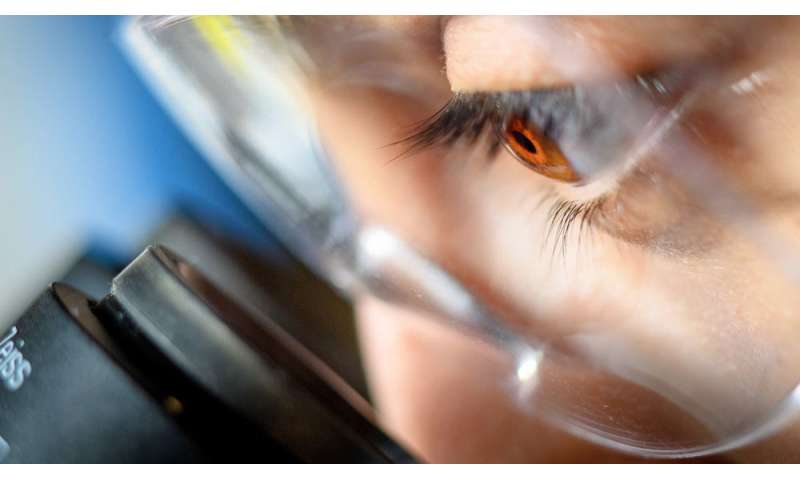
As testing for the coronavirus continues throughout the United States, researchers have been closely watching results, particularly reported rates of false negatives.
According to the Radiological Society of North America, a reported 40 to 70 percent of coronavirus tests from throat swab samples returned false negatives at the onset of the epidemic. Given the highly infectious nature of this particular coronavirus, individuals receiving false negative results—told they do not carry the virus when in fact they do—could continue to infect others.
“It is very concerning,” said Hsueh-Chia Chang, the Bayer Professor of Chemical and Biomolecular Engineering at the University of Notre Dame. “In an overcrowded hospital, where there is only room to quarantine the COVID-19 carriers, false negatives would mean some carriers can continue to infect other patients and healthcare workers. This, unfortunately, is also true for other infectious viral diseases such as dengue and malaria, when there is an epidemic. False negatives are usually not an urgent problem, when every symptomatic patient can be quarantined and there are fewer people to infect—until an epidemic overcrowds our hospitals and we have only enough space to sequester the carriers.”
At Notre Dame, Chang’s research lab focuses on the development of new diagnostic and micro/nanofluidic devices that are portable, sensitive and fast. His work includes diagnostics with applications to DNA/RNA sensing. Current coronavirus tests are RNA-based.
Chang said technology his lab developed for other uses could easily be extended to apply to testing for the coronavirus.
“I had developed the technology for isolating cellular material such as vesicles and exosomes during liquid biopsies. They turn out to be the same size as the virus,” he said.
The tests combine nanofiltration with immersed AC Electrospray (iACE) digital droplet isothermal polymerase chain reaction (PCR) technology. The nanofiltration part of the test would work to wash away inhibitors while the iACE would allow detection of a very small number of the coronavirus viral particles per sample, improving sensitivity during testing.
Detection can be inhibited at the molecular level, Chang explained. The current tests for coronavirus are CR-based, a common method that replicates a small sample of RNA—from a nose or throat swab, for example —increasing the number of RNA exponentially in order to identify the presence of the virus and determine the stage of infection.
“The inhibitors, in this case molecules and ions, prevent the reaction from occurring even when the target virus is there, resulting in a false negative,” said Chang. “Our technology removes these inhibitors. There is also the question of yield. In removing the inhibitors, you do not want to lose the target virus as well, so they escape detection. Our technology achieves higher yield in retaining the virus. It extracts the target virus with higher yield and purity than current technology.”
His size-based nanotechnology is especially useful in this case. The coronavirus is between 60 and 140 mm in size. The inhibiting molecules, Chang explained, are smaller than 60 mm, which means he can effectively wash away those particles while retaining the virus.
“The issue is that such small particles often cause clogging and produce high pressure during tests, and break up virus particles, so they’re lost to detection. This is one cause for false negatives,” Chang said. “We already have a patented design that allows filtration of the virus from inhibitors without clogging and without breaking the target virus particles.”
Notre Dame has suspended laboratory research operations across campus with the exception of coronavirus-related research. Chang’s lab is one that received approval to remain operational. Researchers in his lab are not currently working with samples that contain the coronavirus, rather they are testing the technology against a lentivirus serum—a virus that is similar but safe to work with.
“I’m fortunate to have very passionate and capable postdoctoral and Ph.D. students that believe in these technologies and are willing to be in the lab during these trying times,” he said. “Their presence is completely voluntary. In fact, we reduced the number of researchers to three essential people even though several more had volunteered. They abide by very stringent social distancing and lab hygiene rules. They also work in shifts to minimize contact. Another research professor and I are in constant email and cellular communication with them. They are currently testing lentivirus in saliva samples and trying to get more data to back up the numbers.”
The numbers, so far, show that Chang’s test combining nanofiltration with iACE technology are 1,800 times more sensitive in tests run with the lentivirus.
If additional grant funding is approved for his research, Chang said he intends to work with the Centers for Disease Control and Prevention or other Food and Drug Administration approved labs to validate the technology with actual samples containing the coronavirus.
In a white paper outlining the research, Chang set milestones for the work with hopes —if approved—to begin manufacturing devices in six months. However, given the current state of the pandemic, Chang said realistically the technology would be used in cases of future epidemics and outbreaks.
Source: Read Full Article
